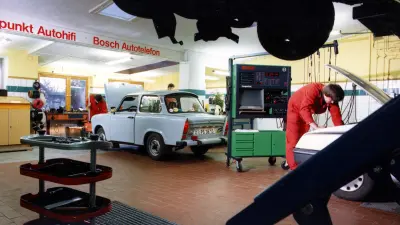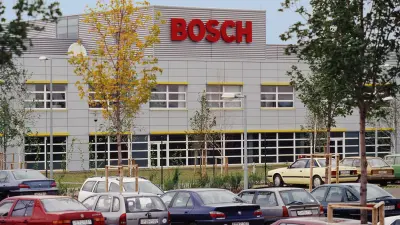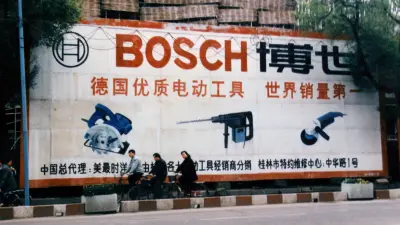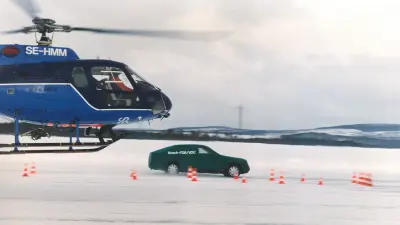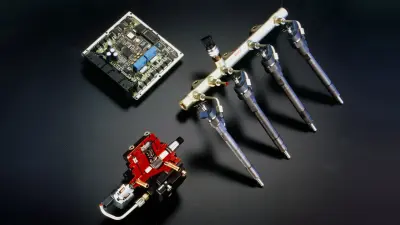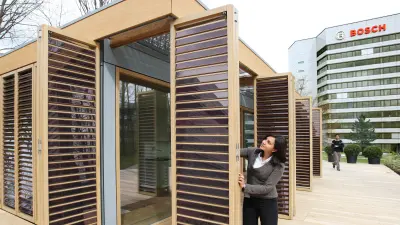Globalization since 1990

The Iron Curtain came down, Asia provided new markets, and software opened up new opportunities for Bosch. The last three decades have brought rapid economic change, which the company has to face head-on.
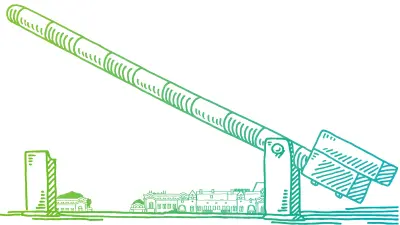
The collapse of the Warsaw Pact and opening of Eastern Europe
The fall of the Iron Curtain also heralded a new era for Bosch. By 1994, it had companies of its own in 13 countries of the former Eastern Bloc. Bosch went on to open manufacturing facilities in Jihlava and České Budějovice in the Czech Republic, Wrocław in Poland, Miskolc and Hatvan in Hungary, and Engels and Samara in the Russian Federation. The share of sales generated outside Germany rose from 51 percent in 1990 to around 72 percent in 2000.
Seizing opportunities — new sights set on Asia
In India, Japan, and the countries of south-eastern Asia, Bosch was either long-since present or busy gaining a foothold in emerging markets. But it was the gradual opening of the Chinese market that was of greatest strategic interest. Up till 1994, the only Bosch presence in China had been in the form of licenses and a representative office in Beijing, established in 1989. After that, Bosch was also able to gain a foothold as a regional producer in this market, too.
Micromechanical sensors

Mini monitoring devices
Bosch developed micromechanical sensors for use in automobiles during the 1990s, which work like sensory organs for measuring acceleration, rotation, pressure, and sound. They relay information to electronic control units, letting them know exactly when to inflate an airbag in an accident, for example. In 2005, Bosch also started manufacturing sensors for consumer electronics, such as smartphones or games consoles. The smallest MEMS are just 1.5 millimeters wide. A Bosch research team invented the “plasma etching” process for manufacturing these miniature parts. Bosch has produced around 5 billion MEMS since 1995 and is now the market leader, manufacturing some 4 million units each day.
Photo: A mite on a micromechanical sensor (MEMS) to indicate scale (1995)

From ESP to ACC — tighter focus on innovations
The ESP® electronic stability program launched in 1995 was a technological milestone. It prevents vehicles from skidding. The same year, Bosch unveiled its TravelPilot navigation system with route guidance and voice output. In 1997, the Common Rail high-pressure diesel injection system reduced fuel consumption, as did the DI Motronic gasoline direct injection in 2000, while driver assistance systems such as Adaptive Cruise Control and Night Vision improved safety.
The company undergoes change — new fields of business
Following the sale of the telecommunications section, Bosch acquired industrial technology specialist Mannesmann Rexroth in 2001. This strengthened the industrial technology section and balanced the company’s structure. The remaining parts of the telecommunications section formed the Security Systems division. Bosch expanded its thermotechnology section with the acquisition of Buderus AG in 2003. Bosch parted with other new fields such as the solar energy section it had set up in 2008.

Smart screwing, cycling, cooling, and steering
With the IXO electric screwdriver, which surprisingly quickly became the best-selling power tool worldwide, Bosch established a new business field in 2003 for small, lightweight devices with lithium-ion batteries. Entirely new fields also emerged, such as e-bicycle drives in 2011. At the same time, Bosch expanded its traditional activities, for example with the buyout of former joint ventures such as ZF Lenksysteme and Bosch und Siemens Hausgeräte – which formed the crucial basis for future scenarios such as web-enabled household appliances and self-driving automobiles.
Automated driving

Traveling on autopilot
Automated driving is no longer limited to science fiction. Bosch researches, develops, and tests this technology in laboratories and on the German autobahn network and Californian highways. Bosch launched a distance radar as early as 2000. The next generation system was then capable of automatically braking an automobile to a stop and accelerating it in turn in queueing traffic. As sensor technology and software develops further, this will gradually also become possible on highways by around 2020, on country roads by 2025, and in urban traffic by 2030.
Photo: Test vehicle for automated driving with a rotating 360-degree high-speed camera (2015)
Venturing into new territories — IoT and Industry 4.0
The Internet of Things and Services opens up many new lines of business for Bosch. Besides traditional products, this also includes software, new internet-based business models, and data protection. The company has set itself the aim of combining these four fields in the long term. This covers everything from automated driving to smart homes and autonomous communication between factory machinery.
